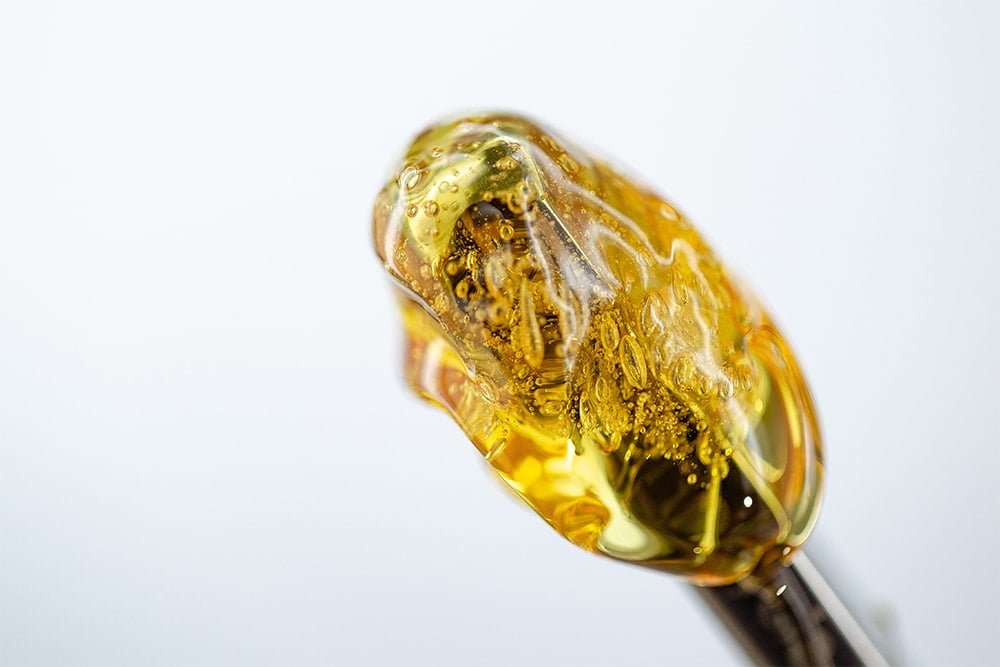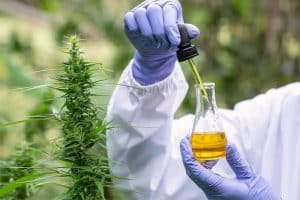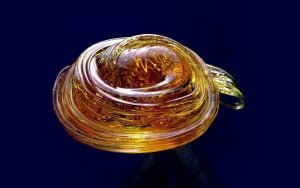As of 2024, cannabis is legal for recreational use in 24 states in the country. These relaxed laws have made it possible for some cannabis producers and processors to get even more creative with the products they make available to the public.
Cannabis extracts have always been popular, but a more intense, refined product has slowly taken center stage: cannabis distillates. Cannabis distillates are potent, pure, and flexible in how they can be used. Let’s take a closer look at these cannabis products and how they are made.
What Is Cannabis Distillate?
Cannabis distillate, simply put, is a super-concentrated extract created through the process of molecular distillation with cannabis distillation equipment. Cannabis distillates contain high levels of cannabinoids.
For example, THC distillate is often referred to as the most potent cannabis concentrate available, sometimes boasting as much as 99 percent pure tetrahydrocannabinol (THC).
During the distillation process, a combination of heat and pressure separates the valuable cannabinoids from the other compounds found in the extract derived from the plant.
Cannabis Distillate vs Other Cannabis Concentrates
Most other cannabis concentrates are not as purely refined as cannabis distillates.
For example, if you have a live resin, you have a product that is potent, but it will also contain a lot of other plant compounds, specifically terpenes. This is because the live resin is created via methods that protect the terpenes found in the cannabis flower.
Both products have their value. Some people prefer concentrates that contain terpenes, while others are looking for concentrates more for their high cannabinoid content. During the cannabis distillation process, most of the flavor and aroma from terpenes are removed.
However, terpenes can be added back to cannabis products. For example, terpenes can be added to cannabis products like vape cartridges for enhanced flavor and desired effects.
How to Make Cannabis Distillate in Four Simple Steps
Making cannabis distillate is perhaps one of the most in-depth processes pertaining to making concentrates. Here is a quick look at some of the steps involved in the full process.
1. Initial Extraction
The initial extraction process involves separating the valuable, cannabinoid-rich trichome from the cannabis plant. Trichomes are sticky glands made of resin that can be found growing on the flowers of a cannabis plant.
Flavonoids, terpenes, and cannabinoid concentrations are most abundant in the trichomes. To separate the trichome from the plant, the plant matter is put through an initial extraction process using one of a few different methods, such as supercritical CO2 extraction, light hydrocarbon, or ethanol based extraction.
2. Filtration Through Winterization
The end result, after using a solvent or supercritical extraction to remove trichomes, is a valuable, but not particularly pure, crude oil. This concentrate still contains certain impurities, such as plant lipids and chlorophyll, and an array of cannabinoids and terpenes found in the trichomes.
During the winterization process, ethanol is mixed with the extracted crude oil, and then stored below freezing for up to 48 hours. This causes some of the unwanted constituents, such as plant lipids and waxes, to coagulate or harden. These unwanted compounds are then easily filtered from the chilled mixture.
3. Decarboxylation
Decarboxylation is the process of transforming cannabinoids with heat and time to enhance their ability to interact with the body’s receptors. Decarboxylation transforms the acidic forms of cannabinoids into the actual cannabinoids themselves without the acidic molecules.
For example, THCA (tetrahydrocannabinolic acid) must be converted into THC and CBDA (cannabidiolic acid) must be converted into CBD. Without this important step, the cannabinoids will not produce psychoactive effects.
Each cannabinoid becomes decarboxylated at a different temperature. The winterized, filtered crude oil is decarboxylated at the appropriate temperature to convert the desired cannabinoids.
4. Final Distillation
Final distillation involves using cannabis distillation equipment to almost completely separate the existing cannabinoids from everything else that remains in the crude oil. The distillation equipment uses precise temperature control and vacuum pressure to vaporize the different compounds.
Those vapors are then condensed onto an internally located condensing column, and the temperature difference of the column converts the vapors back into a liquid form. Because each compound remaining in the crude oil has a different boiling point, and the distiller controls temperature and vacuum pressure, specific elements and cannabinoids can be pulled out. This is why the end product can be so pure and potent.
4. Isolation
CBD distillate is a highly concentrated form of cannabidiol (CBD) extracted from the cannabis plant. It undergoes a multi-step extraction and purification process like chromatography to remove impurities and other cannabinoids, resulting in a predominantly CBD product.
THC distillate is a concentrated form of delta-9-tetrahydrocannabinol (THC), the psychoactive compound found in cannabis. Additional purification steps may be taken to ensure the distillate primarily contains THC, depending on the desired purity level. Chromatography or other techniques may be used for further isolation if needed.
A Look at the Equipment Used While Making Cannabis Distillate
There are many factors (e.g. extraction method used) that determine exactly which equipment is required to produce cannabis distillate, but a broad overview would include the following:
- Initial extraction equipment, such as a light hydrocarbon extractor
- Winterization and decarboxylation equipment
- A press for direct filtration
- Wiped film distillation equipment
The Best Cannabis Distillate Requires the Best Distillation Equipment
Cannabis distillation is the way of the future when it comes to cannabis products. However, the best distillates are produced with proper training and the best equipment. To find out more about cannabis distillation, be sure to explore quality cannabis distillation equipment from Root Sciences.



